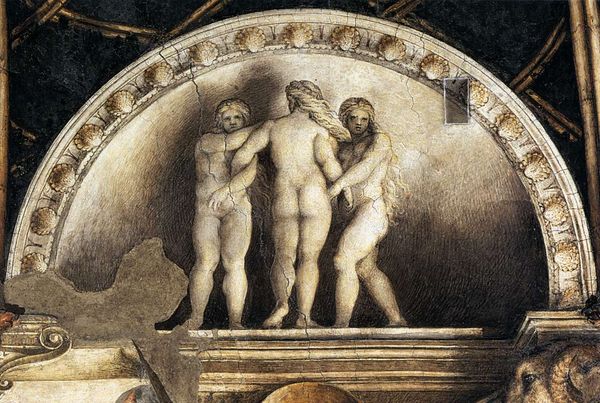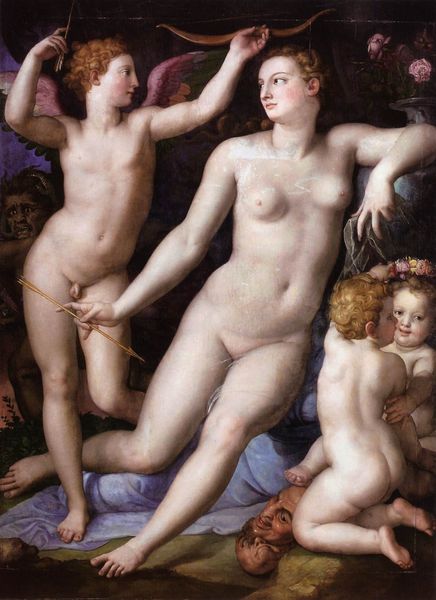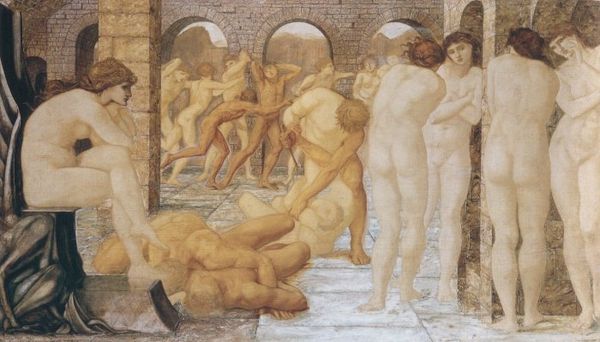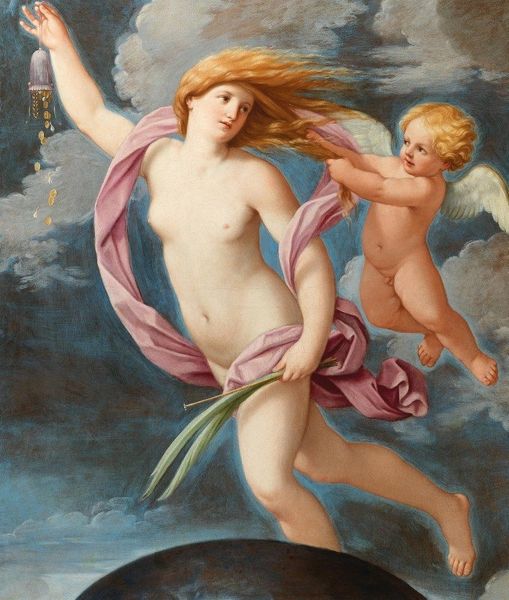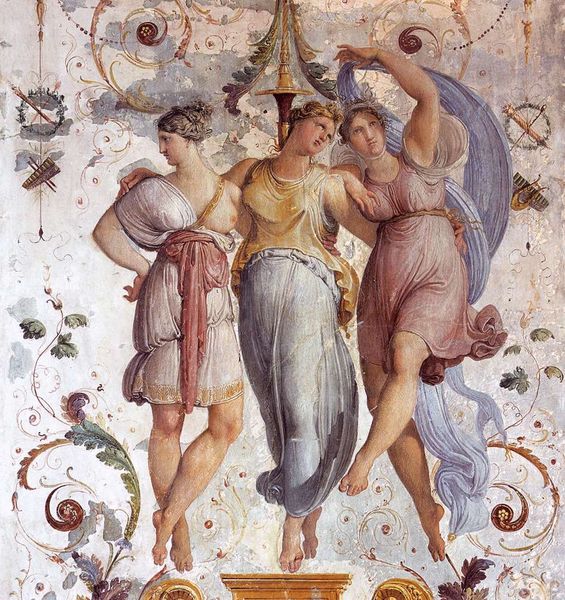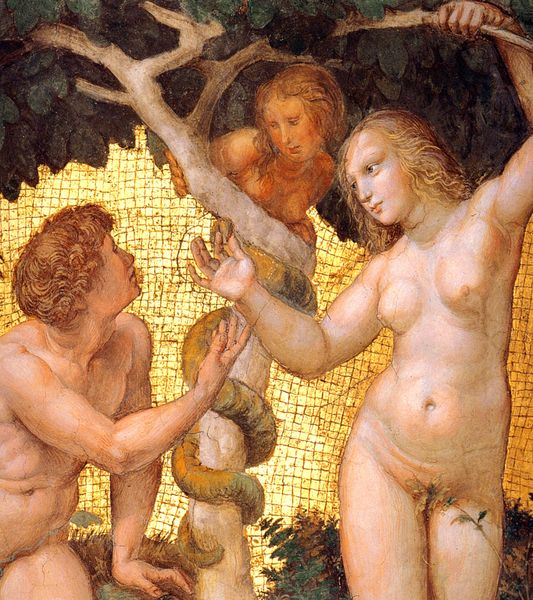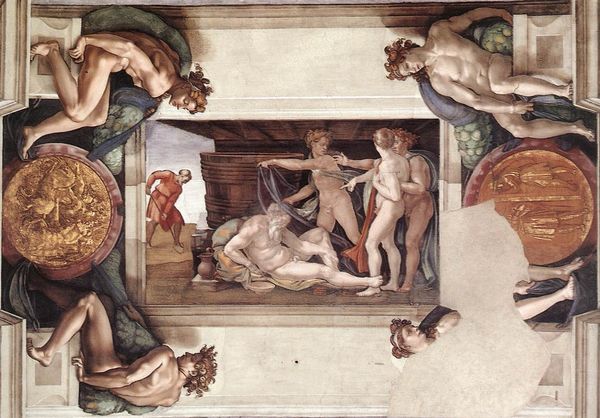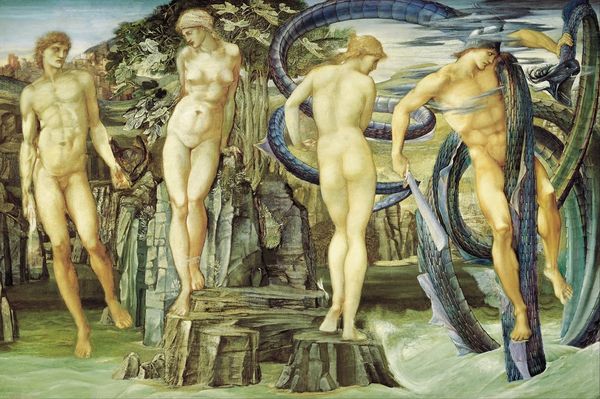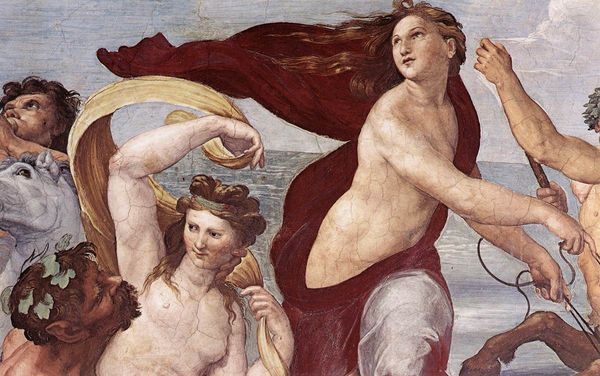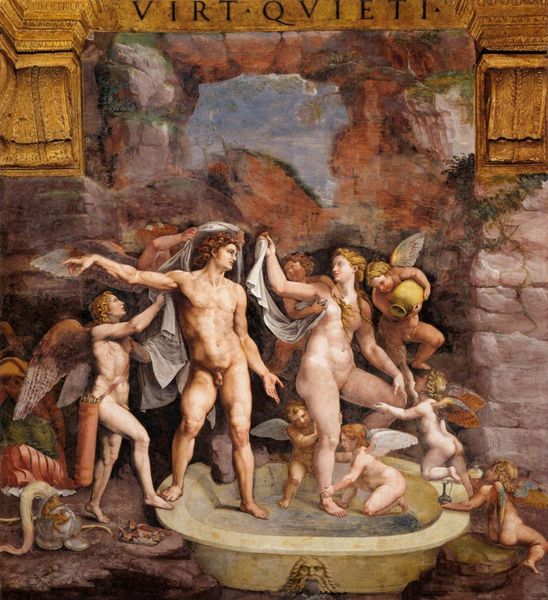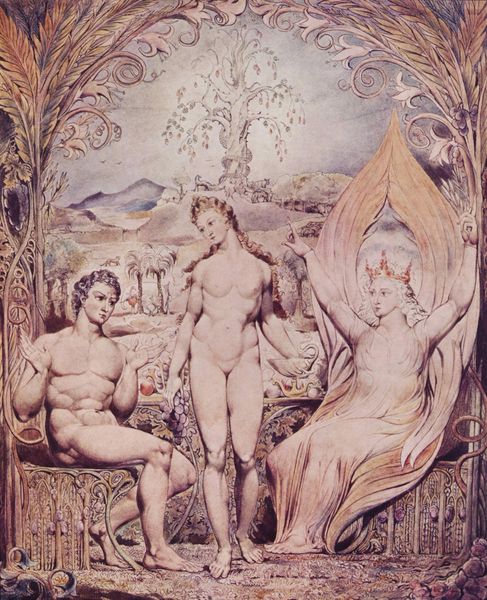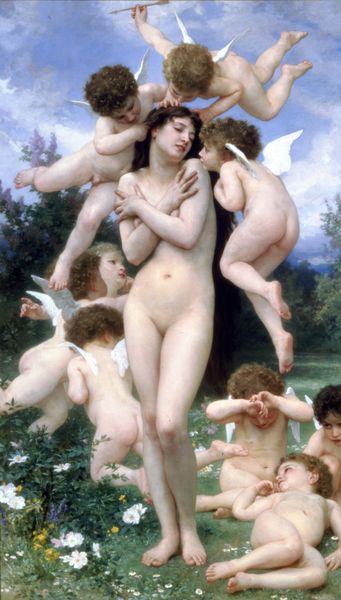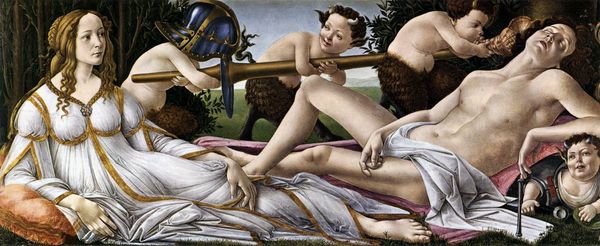
painting, fresco
#
high-renaissance
#
allegory
#
narrative-art
#
painting
#
figuration
#
fresco
#
mythology
#
history-painting
#
italian-renaissance
#
nude
Copyright: Public domain
Editor: Here we have Raphael’s “Cupid and the Three Graces,” painted in 1517 as a fresco for the Villa Farnesina. It’s so light and airy! What immediately strikes me is the idealized beauty, but also, the setting seems unusual with the combination of nude figures against those arching, heavily fruited boughs. How do you interpret the relationship between the figures and this somewhat ambiguous space? Curator: That's an insightful observation. What strikes me is how Raphael uses classical mythology, here Cupid and the Graces, not simply to illustrate a story, but to project an image of refined courtly culture in Rome. Consider who would have commissioned this. Editor: A wealthy patron, definitely. Someone keen on projecting power? Curator: Exactly. Agostino Chigi, a Sienese banker with close ties to the papacy. The display of classical knowledge – seen in the figures and the allegorical themes – becomes a form of cultural capital. This wasn't just decoration; it was a carefully constructed image enhancing Chigi’s status. Do you see how the composition, and the very act of placing these mythological figures in his private villa, is part of a broader social and political strategy? Editor: So, the art becomes almost like a statement...an announcement of status, intellect, wealth. It makes me consider, what role did fresco painting play for patrons commissioning artwork in their private residences at that time? Curator: Frescoes in villas allowed patrons to curate their own personal museums. The choice of subjects, the artistic style—everything contributed to a self-fashioned identity displayed for guests and posterity. What did you make of their nudity and the fruit branches? Editor: Now that you mention it, it adds to the opulence...the unashamed confidence to flaunt a kind of sensuality. And now, knowing about the patron, the piece speaks more to the social landscape in which art was seen. Curator: Precisely. By understanding the social and political forces at play, we gain a deeper appreciation for the artwork’s purpose and its enduring power.
Comments
No comments
Be the first to comment and join the conversation on the ultimate creative platform.
